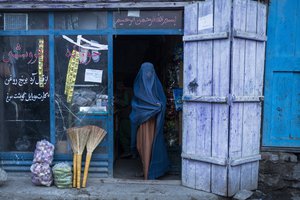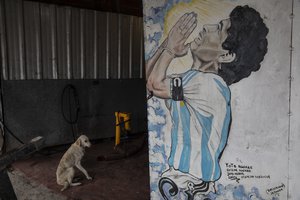- published: 14 Aug 2019
- views: 11874
-
remove the playlistIntermezzo Santa
- remove the playlistIntermezzo Santa
- published: 10 Sep 2018
- views: 12092
- published: 23 Oct 2015
- views: 142795
- published: 10 Jan 2018
- views: 590
Intermezzo
In music, an intermezzo (Italian pronunciation: [ˌinterˈmɛddzo]), in the most general sense, is a composition which fits between other musical or dramatic entities, such as acts of a play or movements of a larger musical work. In music history, the term has had several different usages, which fit into two general categories: the opera intermezzo and the instrumental intermezzo.
Renaissance intermezzo
The Renaissance intermezzo was also called the intermedio. It was a masque-like dramatic piece with music, which was performed between the acts of a play at Italian court festivities on special occasions, especially weddings. By the late 16th century, the intermezzo had become the most spectacular form of dramatic performance, and an important precursor to opera. The most famous examples were created for Medici weddings in 1539, 1565, and 1589.
Opera intermezzo
The intermezzo, in the 18th century, was a comic operatic interlude inserted between acts or scenes of an opera seria. These intermezzi could be substantial and complete works themselves, though they were shorter than the opera seria which enclosed them; typically they provided comic relief and dramatic contrast to the tone of the bigger opera around them, and often they used one or more of the stock characters from the opera or from the commedia dell'arte. In this they were the reverse of the Renaissance intermezzo, which usually had a mythological or pastoral subject as a contrast to a main comic play. Often they were of a burlesque nature, and characterized by slapstick comedy, disguises, dialect, and ribaldry. The most famous of all intermezzi from the period is Pergolesi's La serva padrona, which was an opera buffa that after the death of Pergolesi kicked off the Querelle des Bouffons.
Intermezzo (disambiguation)
Intermezzo is a musical term.
It may also refer to:
Intermezzo (horse)
Intermezzo (1966 – after 2 February 1995), was a British Thoroughbred racehorse and sire. He won two of his three races as a two-year-old in 1968 and went on to record his most important win in the Classic St. Leger Stakes at Doncaster in September 1969. He raced without winning in 1970 and was exported to stand as stallion in Japan, where he had some success as a sire of winners.
Background
Intermezzo was a bay horse bred in by his owner Gerald Oldham. He was sired by Hornbeam, a successful racehorse over extended distance who became the damsire of three Derby winners: Blakeney, Morston and Troy. His dam, Plaza, won several rces for Oldham, who had bought her for 2,400 guineas. As a descendant of the broodmare Rattlewings, Intermezzo was a member of the Thoroughbred Family 13-e, which has produced several important winners including Kayf Tara, Opera House and Hever Golf Rose. Oldham sent the colt to be trained in Newmarket by Harry Wragg at his Abington Place stable.
Racing career
Dumanlı
Coordinates: 40°40′49″N 39°47′3″E / 40.68028°N 39.78417°E / 40.68028; 39.78417
Dumanlı (Greek: Σάντα, Santa) was formerly a mid-size town in Gümüşhane Province of Turkey, close to its border with Trabzon Province; today it is only a village in Gümüşhane district. It consists of seven villages:
Santa (disambiguation)
Santa may refer to:
Places
On earth
In space
People with the name
Art, entertainment, and media
Other uses
See also
Santa (film)
Santa (1932) is the first Mexican narrative sound film. It was directed by Antonio Moreno and starred Lupita Tovar, based on the novel of the same name by Federico Gamboa. In 1994, the Mexican magazine Somos published their list of "The 100 best movies of the cinema of Mexico" in its 100th edition and named Santa its 67th choice.
Plot
A gorgeous and humble Mexican girl name Santa Tovar is being cheated by her arrogant husband, soldier Marcelino. After being rejected by family and friends she finds shelter in a whore house and becomes a bitter and cynic woman.
External links
-

MASCAGNI - INTERMEZZO from Cavelleria Rusticana - Organ of Basílica de Santa María, Elche, Spain
Jonathan Scott performs his transcription of Intermezzo (from Cavalleria Rusticana) by Pietro Mascagni, Live in concert at the organ of Basilica de Santa Maria, Elche Spain. Filmed Live on 24th November 2017 at: La Música del Cielo - IV CICLO DE CONCIERTOS DE ÓRGANO DE LA BASÍLICA DE SANTA MARÍA DE ELCHE Film & Sound by Tom Scott For more information: http://www.jonathanscott.co.uk The Organ of Basílica de Santa María, Elche, Spain GERHARD GRENZING 2006 DISPOSICIÓN DE REGISTROS - SPECIFICATION PEDAL C-f' Contres 16' Subbaix 16' Quinta 10 2/3' Flautat 8' Baix 8' Octava 4' Ple V Bombarda 16' Trompeta 8' I ORGUE MAJOR C-g'' Flautat major 16' Flautat 8' Flauta ximena 8' Flautat harmònica 8' Espigueta 8' Octava 4' Dotzena 2 2/3' Quinzena 2' Ple IV-V En 2' Címbal III Con tercerilla Cornet...
published: 14 Aug 2019 -

Sissel Kyrkjebø - Sancta Maria (Intermezzo from Cavalleria Rusticana) - 2005 [CC]
Sissel Kyrkjebø performing "Sancta Maria" based on Intermezzo from Cavalleria Rusticana at a TV-concert in Oslo, Norway in 2005. Click on CC for English subtitles.
published: 10 Sep 2018 -

Sancta Maria _ Live From Basilica Di Santa Maria Sopra Minerva, Italy / 1999
Music video by Andrea Bocelli performing Sancta Maria. (C) 1999 Insieme Srl Watch the Music for Hope full event here: https://andreabocelli.lnk.to/LiveFromDuomoID Listen to the Music for Hope full event here: https://andreabocelli.lnk.to/MusicForHope1ID http://vevo.ly/Hx3aBS
published: 23 Oct 2015 -

Pietro Mascagni: Cavalleria rusticana, Intermezzo | Arman Azemoon, Orchestra Sinfonica Santa Croce
Orchestra Sinfonica Santa Croce Direttore d'orchestra: Arman Azemoon Primo Violino: Ilye Mihai Nata e con sede presso l'omonima Basilica al Flaminio è stata fondata nel gennaio 2011 dal m° Arman Azemoon, attuale direttore musicale. E' l'unica Orchestra Amatoriale Sinfonica a Roma, il cui organico è rappresentato da musicisti provenienti da vari paesi europei ed extracomunitari oltre che italiani. Il progetto è dedicato a tutti quei musicisti amatori che, pur percorrendo una strada professionale diversa da quella musicale, vogliano coltivare la loro naturale passione artistica. Collaborano all'interno dell'organico musicisti professionisti che, nelle vesti di Tutor danno agli amatori la possibilità di perfezionare l'inserimento in orchestra attraverso laboratori di musica d'insieme. Il p...
published: 10 Jan 2018

MASCAGNI - INTERMEZZO from Cavelleria Rusticana - Organ of Basílica de Santa María, Elche, Spain
- Order: Reorder
- Duration: 4:09
- Uploaded Date: 14 Aug 2019
- views: 11874
- published: 14 Aug 2019
- views: 11874
![Sissel Kyrkjebø - Sancta Maria (Intermezzo from Cavalleria Rusticana) - 2005 [CC] Sissel Kyrkjebø - Sancta Maria (Intermezzo from Cavalleria Rusticana) - 2005 [CC]](http://web.archive.org./web/20211211121405im_/https://i.ytimg.com/vi/lbtVKvuQvAU/0.jpg)
Sissel Kyrkjebø - Sancta Maria (Intermezzo from Cavalleria Rusticana) - 2005 [CC]
- Order: Reorder
- Duration: 3:30
- Uploaded Date: 10 Sep 2018
- views: 12092
- published: 10 Sep 2018
- views: 12092

Sancta Maria _ Live From Basilica Di Santa Maria Sopra Minerva, Italy / 1999
- Order: Reorder
- Duration: 4:34
- Uploaded Date: 23 Oct 2015
- views: 142795
- published: 23 Oct 2015
- views: 142795

Pietro Mascagni: Cavalleria rusticana, Intermezzo | Arman Azemoon, Orchestra Sinfonica Santa Croce
- Order: Reorder
- Duration: 3:32
- Uploaded Date: 10 Jan 2018
- views: 590
- published: 10 Jan 2018
- views: 590



MASCAGNI - INTERMEZZO from Cavelleria Rusticana - Organ of Basílica de Santa María, Elche, Spain
- Report rights infringement
- published: 14 Aug 2019
- views: 11874

Sissel Kyrkjebø - Sancta Maria (Intermezzo from Cavalleria Rusticana) - 2005 [CC]
- Report rights infringement
- published: 10 Sep 2018
- views: 12092

Sancta Maria _ Live From Basilica Di Santa Maria Sopra Minerva, Italy / 1999
- Report rights infringement
- published: 23 Oct 2015
- views: 142795

Pietro Mascagni: Cavalleria rusticana, Intermezzo | Arman Azemoon, Orchestra Sinfonica Santa Croce
- Report rights infringement
- published: 10 Jan 2018
- views: 590
Intermezzo
In music, an intermezzo (Italian pronunciation: [ˌinterˈmɛddzo]), in the most general sense, is a composition which fits between other musical or dramatic entities, such as acts of a play or movements of a larger musical work. In music history, the term has had several different usages, which fit into two general categories: the opera intermezzo and the instrumental intermezzo.
Renaissance intermezzo
The Renaissance intermezzo was also called the intermedio. It was a masque-like dramatic piece with music, which was performed between the acts of a play at Italian court festivities on special occasions, especially weddings. By the late 16th century, the intermezzo had become the most spectacular form of dramatic performance, and an important precursor to opera. The most famous examples were created for Medici weddings in 1539, 1565, and 1589.
Opera intermezzo
The intermezzo, in the 18th century, was a comic operatic interlude inserted between acts or scenes of an opera seria. These intermezzi could be substantial and complete works themselves, though they were shorter than the opera seria which enclosed them; typically they provided comic relief and dramatic contrast to the tone of the bigger opera around them, and often they used one or more of the stock characters from the opera or from the commedia dell'arte. In this they were the reverse of the Renaissance intermezzo, which usually had a mythological or pastoral subject as a contrast to a main comic play. Often they were of a burlesque nature, and characterized by slapstick comedy, disguises, dialect, and ribaldry. The most famous of all intermezzi from the period is Pergolesi's La serva padrona, which was an opera buffa that after the death of Pergolesi kicked off the Querelle des Bouffons.
Related Sites
- santamonicasale.com
- santabarbaragames.com
- santamonicalearning.com
- santabarbaraplaza.com
- santarosaemploymentlaw.com
- organicsantabarbara.com
- santabarbaracamp.com
- santabarbaracelebrity.com
- santabarbarapub.com
- santamonicahealthclub.com
- tvsantamonica.com
- casinosantamonica.com
- santabarbera.com
- santamonicaprojects.com
- santamonicachronicle.com
- radiotvsantamonica.com
- santabarbaraclasses.com
- santabarbaralady.com
- santabarbarabiz.com
- santamonicareporter.com
Latest News for: intermezzo santa
Music@Menlo, Cabrillo fests serve up a virtual feast for classical fans
- 1
Article Search
Most Viewed
The Guardian | 11 Dec 2021
Straits Times | 11 Dec 2021
CoinGape | 11 Dec 2021
Bitcoin Warrior | 11 Dec 2021
Canoe | 10 Dec 2021















